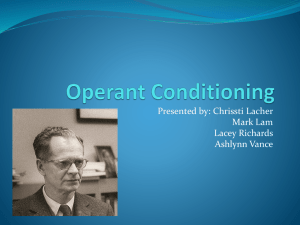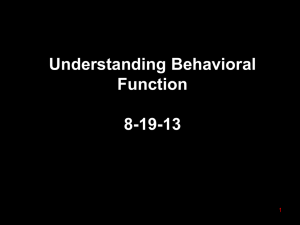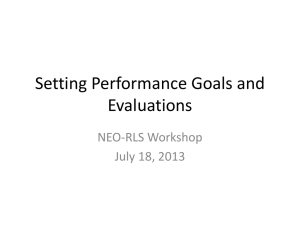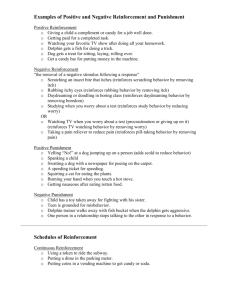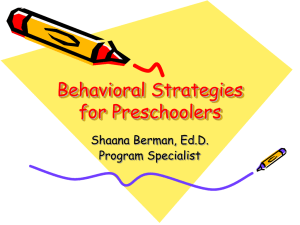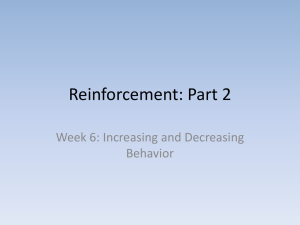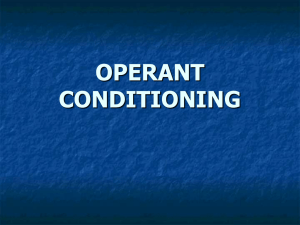How to Live a Balanced Life: Safety Behavior
advertisement
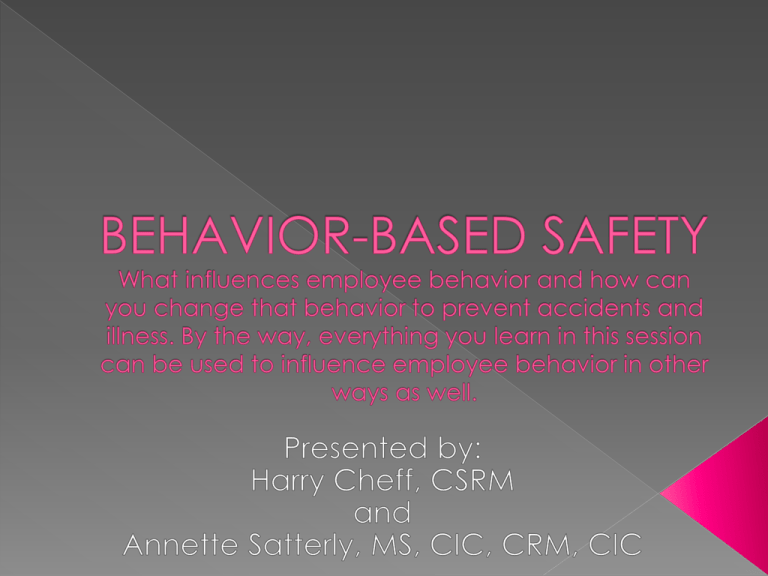
Understand how safety behavior is shaped Analyze employee behavior Pinpoint, observe, and measure specific behaviors Provide positive feedback Use positive reinforcement successfully to improve safety performance ABC Analysis › Antecedents, Behavior, Consequences Types of consequences How to strengthen consequences Pinpointing, observation and measurement Feedback and goal setting Types of positive reinforcement Reinforcement mistakes Jobs get done faster Perception that risk is low “Nothing is going to happen to me” attitude At-risk behavior is reinforced Lack of awareness that behavior is risky Antecedent Behavior Consequences Prompt people to act Precede the behavior Communicate information Work best with consequences Work only in short term if no consequences Stronger than antecedents “Consequences” has negative connotation Positive consequences change behavior Consequences strengthen or weaken behavior Four categories of consequences › › › › Punishment Extinction Negative Reinforcement Positive Reinforcement Getting what you don’t want Criticism, injury, written warning Stops unwanted behavior Is not getting what you want Is no recognition, no acknowledgement Often decreases wanted or safe behavior Can cause safe performers to slip Not getting what you don’t want Avoiding criticism, unpleasant tasks, or accidents Performing desired behavior to avoid punishment Performing desired behavior only when boss is watching Getting what you want Acknowledgement, recognition, better work assignments Maintains or increases desired behavior Gives discretionary effort (more than asked) Behavior occurs more frequently Results of the consequences How employee receives it Behavior increasing Behavior decreasing Type – positive or negative When – immediate or future Probability – certain or uncertain Most powerful – both immediate and certain Moderately powerful – either immediate or certain Least powerful – both future and uncertain Describe the behavior List all antecedents and consequences and describe strength of consequence Determine which consequences are motivating behavior Solution to problem behavior – make weak consequences strong Do you understand the information presented in the previous slides? Measurable Observable Reliable Controllable Observation checklist Spot check behaviors If safe behavior, mark “safe” In unsafe behavior, mark “unsafe” Turn card in Observations Feedback Safe Unsafe Positive Corrective Pinpoint 1 xxx xx xxx x Pinpoint 2 x xxx x xxx Pinpoint 3 xxx x xxx x Comments Records observations and analyzes Uses objective measurement Measures safety process, not just results Gives feedback to employees and capture small improvements Is specific about performance and becomes positive reinforcement Be specific Be sincere Deliver immediately Be personal Don’t use “but” or “however” Don’t ignore unsafe behavior Acknowledge small improvements Be objective Be specific Use a questioning approach Use a 4:1 ration Past performance or baseline Current goals Presented and discussed frequently Short-term and achievable Employee input More opportunities for positive reinforcement Social reinforcement Written Verbal Physical Smile Humor Time or attention Just say “Thank you” Tangible reinforcement Food Gifts Certificates Privileges Money Anchor the memory Be spontaneous Discuss behavior Different tangibles Avoid high-value tangibles Do not overuse tangibles Do you understand the information presented in the previous slides? Too much positive reinforcement Expecting behavior to change too soon Reinforcement before behavior Giving unearned positive reinforcement Learn how to use consequences effectively Analyze safety behavior with the ABC model Pinpoint behaviors and make observations Study collected data to measure results objectively Give positive feedback for safe performance and corrective feedback for unsafe behavior
